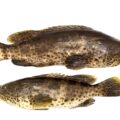Catfish and snapper are two distinct types of fish with several differences. They belong to different families, with catfish belonging to the Siluriformes family while snappers belong to the Lutjanidae family. Their physical appearance varies significantly; catfish have scaleless bodies, barbels, and whisker-like appendages, while snappers have scales and lack barbels. Their habitats differ, with catfish typically found in freshwater environments, while snappers inhabit marine or brackish waters. There is no chance that you will make a mistake between these two fish because of their variations.
There are other differences that we will now discuss.

The appearance
The main difference is in appearance between catfish and snapper. There is no way that you can mistake these two fish when encountered in the wild.
The catfish is a unique fish, one of the few without any scales, which makes its body super slippery. This sets them apart from any other fish, including snapper. As you can tell by the name, the catfish also has whiskers or barbels on each side of its mouth and chin. The catfish is cylindrical and usually very dark in color on top, such as greyish blue, green, brown, and almost black. Being this potential color helps to hide from any predators from the top. The bottom of a catfish’s belly is practically white and very light in color to hide from predators on the bottom. Some catfish also have a very forked tail.
The appearance of snapper is very different. Although there are many snappers, the most common is the red snapper. The snapper is a fish with scales, a flattened body, and a rounded anal fin. Snapper has many interesting colors, unlike catfish, which are mostly dull. The red snapper is deep, rosy, red with a dark fringe around the dorsal and tail fins. There are many more colorful snappers, such as the common blue stripe one, schoolmaster snapper, green jobfish, and much more.
The habitat
The habitat of these fish also varies. Their family has many different fish species, and their habitat can overlap, considering they are both mainly freshwater fish.
The catfish are known to live in every ocean and water body around the world, except Antarctica, where the temperature is too low for them. Most catfish are found in tropical South America, Asia, and Africa. They are also a decent amount in North America and Europe. Most catfish prefer shallow yet running water for their habitat. They have varied habitats, with some living in caves, underground, and salt water. Most catfish remain on the bottom of the water, near the substrate and muddy areas where they look for food and hide well.
Snappers are found in tropical and sub-tropical oceans worldwide; like catfish, there are over 100 species of snapper. These fish are also located near the bottom but do not seek muddy areas, as you can find the fish in sandy areas near weed edges, shallow inshore, and the rocky regions hidden between the kelp. The fish prefers a strong current to drift away on and are sometimes found in shallow water, just sleeping under the sun! Some snapper also prefer reef environments, and usually, the younger fish is found in shallow water such as bays and estuaries. In contrast, adult snappers can be found between the shoreline and depths of 200 m to 300 m since they have larger habitats to explore.
The size
The size of both fish also varies from species to species. Some catfish are tiny, while others can get a few feet long. It is the same with the snapper.
In fact, catfish have the greatest range of size among other bony fish! You can expect most catfish sizes to be around 4.7 inches. The smallest catfish species are called the Asian stone catfish, which only gets about 1.3 inches, and is a popular fish to keep in aquariums. On the other hand, wels catfish and Mekong giant catfish are known to be pretty large. The largest Mekong giant catfish was caught in 2005. It was 9.8 feet long and weighed 646 lbs. It also got the world record for the largest freshwater fish ever caught. Some catfish get this big because they have a very long lifespan, and the Mekong giant catfish has a lifespan of 60 years.
The size of snapper is smaller than that of the catfish. The size of snapper usually varies from 11.8 inches to 35 inches. Unlike catfish, the size of the snapper does not change as much. The weight of the snapper also varies from 4 lbs. to 22 lbs., but some can weigh as well as 44 lbs. The smallest snapper is the lane snapper, which is 25 inches in size and weighs 8 lbs. only. The largest snapper is known as the cubera snapper, which can get as large as 63 inches in length and weigh 126 lbs. Snappers’ lifespan is also long, as they live for at least 40 years. However, the rate of growth of snapper is slower than catfish.
The size of both fish depends on many factors. Of course, the lifespan of the particular fish is most important. The longer that a fish lives, the larger it will get. But it also depends on the food availability and the environmental conditions. In some water bodies, being larger is an advantage, while in others, being smaller allows them to hide better. So, the size depends on various factors, even for fish within the same species.
The diet
These two fish have drastically different diets and how they look for food.
Catfish are opportunistic feeders who rely on whatever they can find in the wild to sustain themselves instead of hunting for food. This is why most catfish are omnivorous, eating plants and animals in the water. The catfish is also a bottom feeder that looks for food at night when it is most well-hidden. The fish can survive on the waste left behind by other predatory fish and get nutrition from it. The diet of catfish mainly includes aquatic plants and seeds, insects and their larvae, small crustaceans, small fish, and mollusks. The catfish usually hide and swallow their prey which is very small and will not be able to put up a fight. The fish can also slide into small crevices due to its slippery body to look for small organisms and plants. The catfish is not a good hunter and relies on its senses to find easy prey.
On the other hand, snapper is a carnivorous fish with very sharp teeth that can break apart the prey in several pieces. The front teeth of snappers are canine teeth, and they also have molars to crush the food. This is why snappers are good predators and hunters. They mainly feed on smaller fish, crustaceans, and invertebrates, but there are over 100 different organisms that the snapper feeds on, depending on the species and habitat. They eat mollusks, fish, worms, urchins, and jellyfish. The snapper also is seen eating algae sometimes, although it is mainly a carnivorous fish.
The reproduction method
The reproduction method is simple for both fish as they are not complicated like grouper. Both catfish and snapper are fast breeders, so their requirements for breeding are simple too.
The catfish reproduction method varies from fish species to species. But most catfish, like channel catfish, have a simple reproducing method. It starts with one of them building a nest for the fry, where they will be cared for a few days to weeks after hatching. The male catfish and the female catfish swim together, and they both release eggs and sperm at the same time. These fuse outside their body, and the mating process is complete. Now, the male sometimes chases the female away and protects the eggs and the fry by guarding the nests. The catfish does not reproduce all year round and only during specific seasons when the water reaches a certain water temperature, normally in summer.
When the snapper reaches maturity, they spawn. Spawning is similar to catfish in that they also have external mating where the male snapper releases sperm, the female snapper releases eggs, and fuses outside the body. But unlike catfish, snapper has no maternal or paternal extinct, and the eggs are left to float away with the current and disperse in the water. Also, during mating season, which can be in winter and summer, the snapper forms large spawning aggregations of thousands of fish.
The nutritional value
Now, moving on, let us talk about what catfish and snapper give as nutritional value to humans since both fish are prized food items and are rich in nutrients.
The catfish is a very low-calorie fish as it has only 105 calories with only 2.9 grams of fat for 100 fish fillets. The fish also has 18 grams of protein and various vitamins and minerals. The fish is particularly high in vitamin B12, vitamin D, selenium, phosphorus, and thiamin. This is a very healthy fish. Although, the skin of the catfish is completely inedible because it is very tough and rubbery.
A 100 gram of snapper fish fillet has around 110 calories, slightly higher than catfish, but it is still a very healthy fish. Like most other fish, it is also an excellent source of vitamin B12. The protein in snapper is 22 grams, much more than catfish. The snapper is perfect for someone who works out and wants proper protein without many calories. The skin of snapper is edible, unlike catfish.

The taste
The taste for catfish and snapper is great, but people have different opinions. The taste of the fish is subjective from person to person, but you should try these fish at least once in your lifetime.
Catfish is considered to be a delicacy in many countries around the world, may it be Asia, America, and Europe. Many people say that catfish tastes great, mild, and slightly sweet. This is a great fish that goes well with most marinades, but since the fish has a mild taste, some people also consider the fish to be tasteless. Also, the taste of catfish highly depends on how it is grown. If the catfish is wild caught, it can taste muddy since it relies on food left over and stays on the muddy substrate if the fish is grown on a farm, given clean food, and kept in better conditions to taste better. The fish is smooth, making it great for grilling as it will stay intact with its large and tougher flakes.
The snapper is a well-known fish for eating like catfish. The fish has soft and white meat and not too many bones. It has a mild sweet taste that is again great for many marinades. Mostly red snapper is a fish that is eaten all over the world.
Conclusion
The catfish and snapper are mostly freshwater fish, but they have a lot of differences in appearance, average size, habitat, nutritional composition, and much more.











